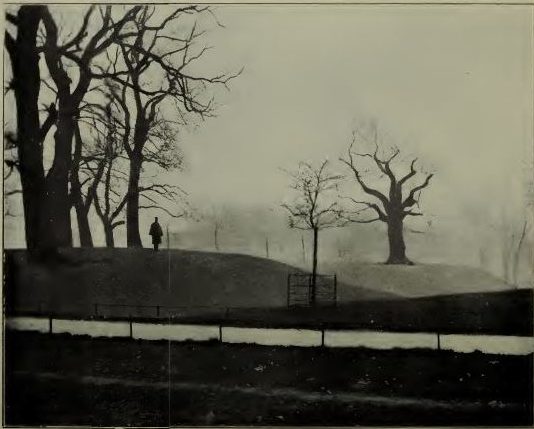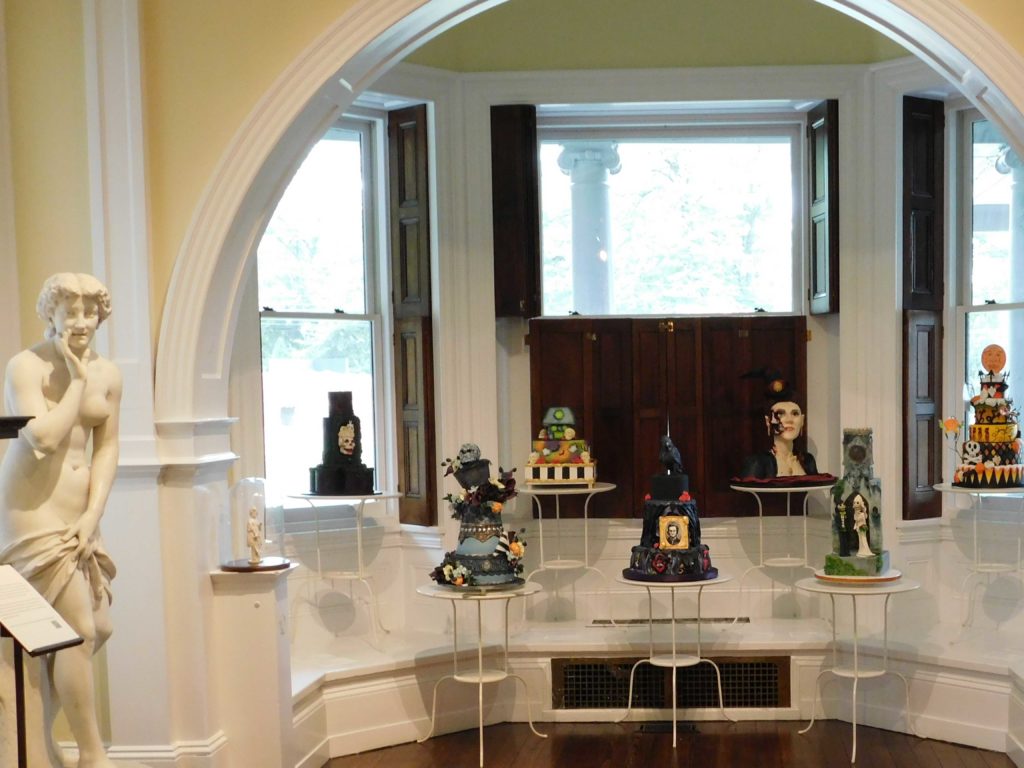T’aint No Sin, to Take off Your Skin, and Dance Around in Your Bones
One more for Halloween, from Jazz Age singer Lee Morse and the Blue Grass Boys:
Halloween Cakes at the Woodmere Art Museum
Dreadful Delights: a limited run exhibition (ending November 1) at the Woodmere Art Museum in Chestnut Hill, Pennsylvania.
The Shovel is my Pick
Pick the right tool for the job:
From Abbott and Costello Meet the Mummy (1955)
If the shovel is your pick, here’s a good one.
Time Team at the Greenwich Park Roman Site
Here’s the Time Team episode from 2000, when the team excavated the Roman site in Greenwich Park. Surprisingly, they don’t get into the whole camel controversy, in fact, I don’t think they mention bones at all.
Mercy, the Mummy Mumbled: the 1918 African American Silent Film
With Halloween approaching, here’s a shoutout to an early mummy movie. Mercy, the Mummy Mumbled, is an all-black silent film from 1918. Several silent movies featured mummies as plot devices; The Egyptian Mummy, for example, was released in 1914 but Mercy is likely the only one made by African-American filmmakers for African-American audiences.
The plots of the two films are very similar: a mad scientist is willing to pay big bucks for a mummy to experiment on; a young man needs money to marry his girlfriend; a fake mummy is created. Mercy adds two Egyptian secret agents tracking down their country’s stolen artifacts to the story, all within an 11 minute run time.
Mercy, the Mummy Mumbled was released by the short-lived Ebony Film Corporation of Chicago and is included in Pioneers of African-American Cinema box set (but Mercy is only on the Blu-ray collection, not on the DVD collection) by Kino Lorber. The five discs include movies from as early as 1915 and as late as 1946. See the New York Times review for more details: Black Filmmaking Aborning. Much of the film can also be viewed on YouTube, and stills from Mercy can be seen at the DAARAC site. The Egyptian Mummy, released by the much larger Vitagraph company, can be streamed on Amazon Prime.
Camels in Blackheath
OK, so maybe there were no camels in Roman Greenwich, but that doesn’t mean there were never any camels around. Here’s a caravan of them in Blackheath, just south of Greenwich Park, in the 1950s:

A Camel at Greenwich? Zooarchaeology and Negative Evidence for Camels in Roman Britain

T. Cregg Madrigal
©2018
Abstract
Reviews of the archaeological record of camels in Europe include one reported occurrence from a Roman site in Greenwich Park, England. Examination of the site reports and the surviving bones from the Greenwich Park site indicates that it is unlikely that camel remains were ever found there, and therefore there is no existing osteological evidence for camels in Roman-Britain.
Download a pdf version of this article from the Research page.
Did the Romans bring camels to Great Britain?
Neither the one-hump dromedary (Camelus dromedarius) nor the two-hump Bactrian camel (Camelus bactrianus) is native to Europe, but both species of camel were used by the Romans. Scattered remains of both species of camel, as well as hybrids of the two, have been reported in Roman-era archaeological sites in Europe, including a single site in Great Britain, at Greenwich Park near London (Applebaum 1987:514; Bond 2017; Green 2017; Pigière and Henrotay 2012; Webster 1902).
While most of the other camel finds in continental Europe are based on relatively recent analyses of actual osteological material, the Greenwich Park record is based on a report dating back to the very early twentieth century (Webster 1902). A review of the published reports and an examination of the surviving bones from this site cast doubt on the presence of camel at Greenwich Park.
Members Only: There is No Excuse Not to Vote
Members Only, the makers of the now-classic 1980s racer jacket, encouraged Americans to vote in the 1988 elections using imagery that probably seemed overly dramatic at the time. The U.S. Constitution, the narrator intoned, “suggested a very simple way to keep fools like these out of our government.” The fools? Hitler, Stalin, and Mussolini. The remedy? Voting. Some commercials are timeless.
That jacket is itself pretty timeless:
“It takes a monster from outer space, to make my baby want my embrace”
The Diamonds sing about the positive effect of monster movies. The Canadian quartet recorded Batman, Wolfman, Frankenstein or Dracula in 1959. The song was written by Roy Alfred, who also wrote the lyrics for The Hucklebuck, as well as several songs that tried to hop on the rock and roll craze for singers like Kay Starr (The Rock and Roll Waltz), Tennessee Ernie Ford (Rock, Roll, Boogie), and Nat “King” Cole (When Rock and Roll Come to Trinidad).
For more Halloween music, check out Tain’t No Sin to Take off your Skin and these three lesser-known songs.





